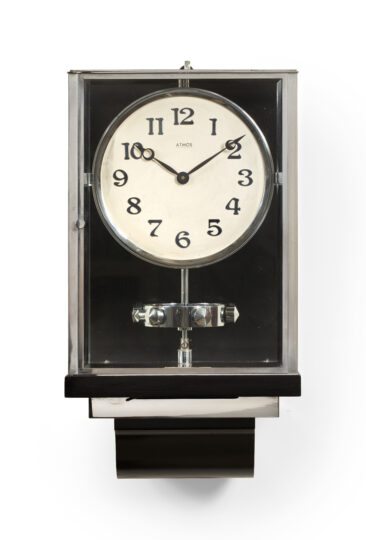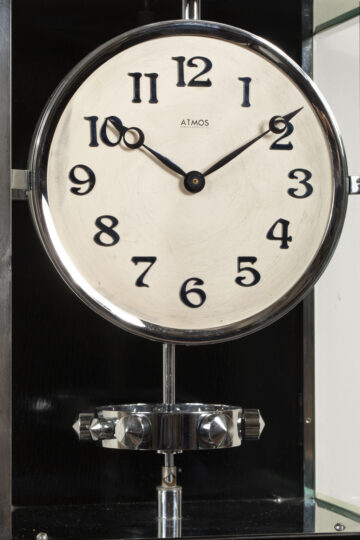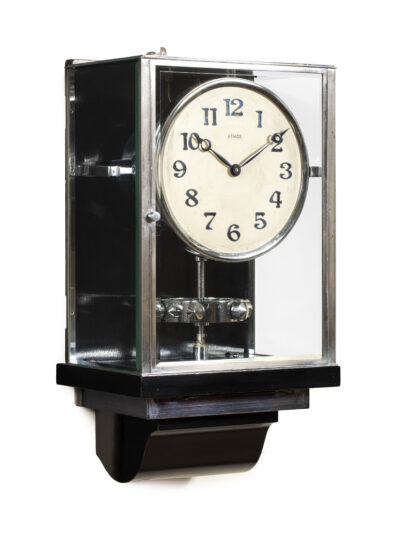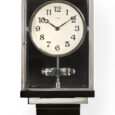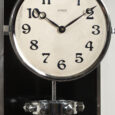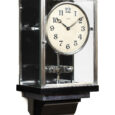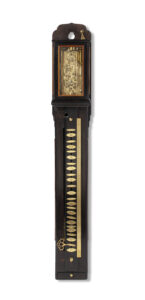RARE ATMOS WALL CLOCK Brevete J.L. Reutter, Atmos 3379 Ca. 1930 France
M&R130
RARE ATMOS WALL CLOCK
Signed and numbered: Brevete J.L. Reutter, Atmos 3379
Circa 1930
France
Movement
The spring-driven movement is constructed between two circular plates and has a rotating balance wheel, suspended from a thin metal strip under the movement (torsion spring). The mainspring is wound under the influence of variations in temperature. As a result of changes in temperature a large drum changes in shape which causes the mainspring to be wound a little. If the temperature does not change, the duration of the clock is 90 days. The back of the movement is marked with the number on a strip behind the spring barrel: 3379 with a signature plaque which reads as follows J.L. REUTTER S.G.D.G. Made in France.
Dial
The circular matt silvered dial has an Arabic chapter ring. The time is indicated by a blued steel pair of Breguet hands. The dial is marked under the 12: ATMOS PENDULE PERPETUELLE.
Case
The chrome-plated brass case has bevelled glass panels on three sides. There is a door at the front to access the hands. The rear side and the bracket are made of wood, whilst there is a mirror under the movement. There is a slide at the front with which the rotating balance can be secured, allowing the clock to be moved. At the back is plaque with the name of the maker Brevete J.L. Reutter S.G.D.G. Made in France.
Duration: Infinitely, but is case of lack of winding 90 days.
Height 39 cm.
Width 21.5 cm.
Depth 16.5 cm.
Literature:
– J. Zeeman, Het klokkenlexicon, Zwolle, 2003, p. 17.
– Jean Lebet, Von der Luft leben, die Geschichte der Pendeluhr Atmos.
The maker:
Jean-Léon Reutter (1899-1971) was the inventor and maker of the Atmos clock. In 1913 this Parisian engineer began to experiment with mechanism, which eventually would lead to the production of Atmos clocks. His ideas were based on those of James Cox which dated back to 1765. The first commercially produced clock appeared on the market in 1926 and the first patent was applied for in 1929. Reutter used a U-shaped tube positioned in such a way that it could slightly swing. The horizontal part and part of the vertical tubes were filled with mercury, the space above the mercury being filled with a fast-evaporating liquid and the corresponding saturated vapour. One vertical tube was insulated, the other was not. When the temperature rose, the pressure in non-insulated part more than in the other and a small quantity of mercury moved from one side to the other, which made the U-tube tip over to one side a little. This motion was used to wind the mainspring. When the temperature dropped the opposite happened. Later versions of the Atmos clock used a metal drum filled with ethyl chloride.

